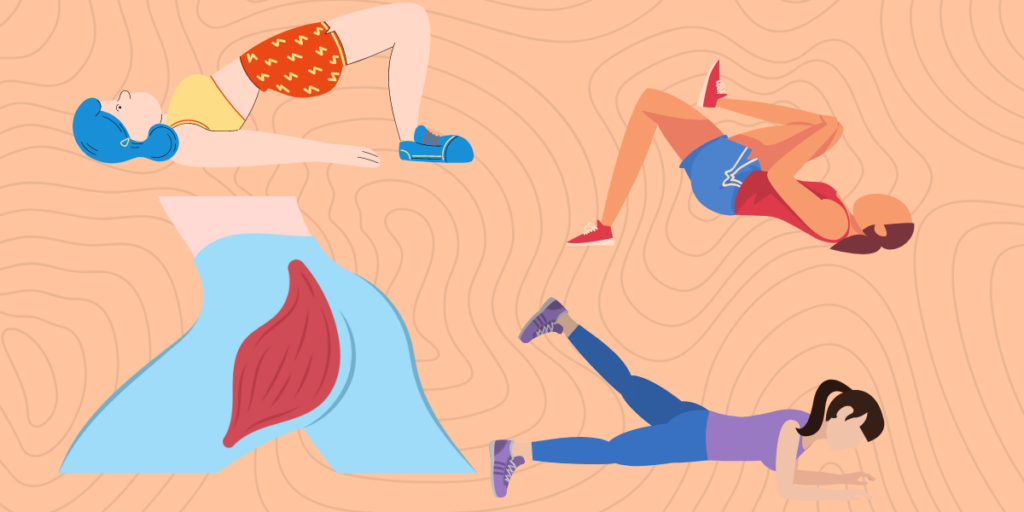The best exercises for building glute mass are compound movements that target the glutes, such as barbell squats, deadlifts, and hip thrusts. These exercises allow you to progressively overload the muscles with heavy weights, leading to significant growth.
Glute Exercises for Mass are exercises specifically designed to target and stimulate growth in the gluteal muscles.
Building glute mass requires a strategic approach that combines compound exercises, progressive overload, and proper form.
Follow These Glute Exercises for Mass Building

Compound Exercises
Compound exercises are multi-joint movements that engage multiple muscle groups simultaneously. These exercises are particularly effective for building glute mass because they allow you to lift heavier weights, leading to greater muscular stress and subsequent growth.
1. Barbell Squats
Barbell squats are arguably the king of Glute Exercises for Mass due to their ability to engage the entire lower body, especially the glutes. As you descend into the squat position, your glutes contract to initiate the movement and support the weight on your back. Proper squat depth is essential for maximal glute activation.
2. Deadlifts
Deadlifts are another compound exercise that targets the glutes, hamstrings, and lower back. As you lift the weight off the ground, your glutes contract forcefully to extend your hips and drive the movement. Deadlifts are particularly effective for developing the posterior chain, including the glutes.
3. Hip Thrusts
Hip thrusts are a glute-specific compound exercise that isolates and maximally contracts the gluteal muscles. By positioning your shoulders on a bench and driving your hips upward against resistance (a barbell or weight plate), you create a glute bridge that intensely works the glutes throughout the entire range of motion.
When performing these compound exercises, focus on proper form and gradually increase the weight or resistance over time. This progressive overload is essential for stimulating muscle growth and achieving your desired results.
Unilateral Exercises
unilateral exercises (those that work one side of the body at a time) can be invaluable for addressing muscle imbalances and targeting weaker areas.
1. Lunges
Lunges are versatile exercises that can be performed with bodyweight, dumbbells, or a barbell. By stepping forward and descending into a lunge position, you challenge the glutes, quadriceps, and hamstrings of the working leg to stabilize and drive the movement. Alternate legs to evenly target both glutes.
2. Step-Ups
Step-ups are another excellent unilateral exercise that mimics real-life movements while heavily involving the glutes. By stepping up onto a box or bench with one leg at a time, you engage the glutes to propel your body upward and develop strength and stability.
3. Single-Leg Glute Bridges
Single-leg glute bridges are an isolation exercise that specifically targets one glute at a time. By lifting one leg off the ground and driving the opposite hip upward, you create a concentrated contraction in the working glute, helping to address any weaknesses or imbalances.
Resistance and Intensity Variations
Varying the resistance and intensity of your exercises can provide new stimuli for muscle adaptation and prevent plateaus.
1. Weight Progression
As you become stronger and more proficient with a particular exercise, gradually increase the weight or resistance over time. This progressive overload is crucial for prompting your muscles to adapt and grow. However, it’s essential to maintain proper form and control throughout the movement to avoid injury.
2. Resistance Bands
Resistance bands can be a valuable tool for adding variable resistance to your glute exercises. As the band stretches during the movement, it creates increasing tension, challenging the muscles through the entire range of motion. Bands can be used for exercises like hip thrusts, glute bridges, and banded squats.
3. Tempo Training
Manipulating the tempo (speed) of your exercises can also provide a unique stimulus for muscle growth. For example, slowing down the eccentric (lengthening) phase of an exercise can increase time under tension and promote greater muscular activation.
By introducing variations in resistance and intensity, you can continually challenge your glutes, prevent adaptation, and sustain progress over time.
Rest and Recovery
During periods of rest, your muscles have the opportunity to repair and grow, setting the stage for future progress.
1. Adequate Sleep
Aim for 7-9 hours of quality sleep per night to support muscle recovery and growth hormone production. Sleep deprivation can hinder your body’s ability to fully recover and adapt to the demands of your training.
2. Proper Nutrition
Consuming a balanced diet with sufficient protein, carbohydrates, and healthy fats is essential for fueling your workouts and supporting muscle repair and growth. Additionally, staying well-hydrated can aid in muscle recovery and overall performance.
3. Deload Weeks
Periodically incorporating deload weeks, where you reduce your training volume and intensity, can allow your body to recover from accumulated fatigue and prepare for future training cycles. Deload weeks can help prevent overtraining and promote long-term progress.
By prioritizing rest and recovery alongside your glute exercises, you’ll create an environment conducive to optimal muscle growth and overall physical and mental well-being.
FAQ
What is the best exercise for building glute mass?
The barbell squat is often considered the best exercise for building glute mass due to its ability to engage the entire lower body, especially the glutes, under heavy loads.
Can glute exercises help reduce cellulite?
While there is no definitive cure for cellulite, building muscle mass in the glutes through targeted exercises can help improve the appearance of cellulite.
How often should I train my glutes?
It’s generally recommended to train your glutes 2-3 times per week, allowing for adequate rest and recovery between sessions.
Do I need to do high reps for glute growth?
While higher reps can be beneficial for muscle endurance and metabolic conditioning, the most effective rep range for building glute mass is typically in the 6-12 rep range.
Conclusion
Follow these exercises for better glute growth and strength. With consistent effort and proper form, you will notice improvements.
progress takes time and dedication. Focus on your technique and gradually increase the challenge as you become stronger. Include these workouts in your routine for comprehensive development.